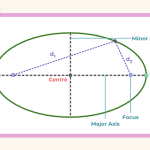Imagine you’re a skilled carpenter, meticulously crafting a beautiful piece of furniture. As you measure and cut, you realize that one piece is slightly too long and needs to be trimmed.
Just like in carpentry, precision and accuracy are essential in programming. In the world of Java arithmetic, mastering subtraction is a fundamental skill that will elevate your coding abilities to pro level.
But fear not, for in this discussion, we will unravel the secrets of Java subtraction, from basic operations to advanced techniques. So grab your virtual toolbox and join us on this journey as we uncover the art of subtracting like a pro in Java.
Understanding the Subtraction Operator in Java
To perform subtraction in Java, you can use the subtraction operator (-) to subtract one value from another. The subtraction operator works by taking two numerical values and returning their difference. It’s a binary operator, which means it requires two operands to perform the subtraction operation.
When using the subtraction operator, keep in mind that the order in which you write the operands matters. The first operand represents the minuend, or the value from which you want to subtract. The second operand represents the subtrahend, or the value you want to subtract from the minuend. The result of the subtraction operation is the difference between these two values.
For example, if you have the expression 10 – 5, the value 10 is the minuend and 5 is the subtrahend. When you evaluate this expression, the result is 5, because you’re subtracting 5 from 10.
In Java, you can perform subtraction between different types of numerical values, such as integers, floating-point numbers, and even characters. The subtraction operator is a fundamental tool in arithmetic operations, allowing you to manipulate numerical values and perform calculations in your Java programs.
Performing Basic Subtraction in Java
Perform basic subtraction in Java by using the subtraction operator (-) to subtract one value from another. This operator is used between two operands, the minuend (the value from which another value is subtracted) and the subtrahend (the value being subtracted). The result of the subtraction operation is the difference between the two values.
To perform basic subtraction in Java, you can simply write an expression using the subtraction operator. For example, if you want to subtract the value 5 from the value 10, you can write:
int result = 10 – 5;
In this example, the result variable will hold the value 5, which is the difference between 10 and 5.
You can also perform subtraction with variables instead of literal values. For instance, if you have two variables, num1 and num2, you can subtract the value of num2 from num1 like this:
int result = num1 – num2;
Remember that the subtraction operator is left-associative, meaning that if there are multiple subtraction operations in an expression, they’ll be evaluated from left to right. Therefore, it’s important to use parentheses when necessary to ensure the desired order of operations.
Dealing With Negative Numbers in Java Subtraction
When working with Java subtraction, it’s important to understand how to handle negative numbers. In Java, subtracting a negative number is equivalent to adding the positive value of that number. This is because subtracting a negative number is the same as adding a positive number. For example, if you have the expression 5 – (-3), you can rewrite it as 5 + 3, which equals 8.
To subtract a negative number in Java, you can use the same subtraction operator (-). However, instead of directly subtracting the negative number, you need to change its sign to positive. This can be done by placing the negative number within parentheses and using the unary minus operator (-) before it. For instance, to subtract -7 from 10, you’d write 10 – (-7), which becomes 10 + 7, resulting in 17.
It’s important to understand how to deal with negative numbers in Java subtraction to avoid confusion and obtain correct results. By following these rules and utilizing the unary minus operator, you can effectively handle negative numbers and perform accurate subtractions in Java.
Exploring Advanced Subtraction Techniques in Java
Delve into the realm of advanced subtraction techniques in Java to enhance your programming skills.
As you progress in your programming journey, you’ll encounter scenarios where basic subtraction operations may not suffice. In such cases, having knowledge of advanced techniques can make a significant difference.
One such technique is the use of bitwise subtraction. By utilizing bitwise operators like AND, OR, and XOR, you can perform subtraction on binary numbers. This technique is particularly useful when dealing with low-level programming or when optimizing memory usage.
Another advanced technique is the use of the subtractExact() method introduced in Java 8. This method provides precise subtraction by throwing an ArithmeticException if the result overflows or underflows. It ensures that you get accurate results without any unexpected behavior.
Additionally, the BigDecimal class offers advanced subtraction capabilities for working with decimal numbers. It provides methods like subtract(), subtractExact(), and subtract(BigDecimal) to cater to diverse subtraction requirements.
Tips and Tricks for Mastering Subtraction in Java
To become a master of subtraction in Java, you need to be familiar with various tips and tricks that can enhance your skills in handling complex subtraction scenarios.
One useful tip is to use the subtraction assignment operator (-=) to simplify your code. Instead of writing a separate line to subtract a value from a variable, you can combine both operations into one line. For example, instead of writing ‘num = num – 5’, you can simply write ‘num -= 5’. This not only makes your code more concise but also improves its readability.
Another trick is to use parentheses to control the order of subtraction operations. By enclosing certain parts of your subtraction expression in parentheses, you can ensure that those operations are performed first, before the rest of the expression. This can be particularly helpful when dealing with complex mathematical formulas that involve multiple subtraction operations.
Lastly, consider using the Math.subtractExact() method when working with integers. This method performs a subtraction operation and throws an ArithmeticException if the result overflows the range of the data type. It’s a safer alternative to the regular subtraction operator (-) when dealing with potentially large numbers.
Frequently Asked Questions
Can the Subtraction Operator Be Used With Other Data Types Apart From Numeric Types in Java?
Yes, you can use the subtraction operator with other data types apart from numeric types in Java. It can be used with character types, where it subtracts the ASCII value of the second character from the ASCII value of the first character.
How Does Java Handle Arithmetic Underflow and Overflow When Performing Subtraction?
When performing subtraction in Java, arithmetic underflow occurs when the result is smaller than the minimum value of the data type. Arithmetic overflow happens when the result is larger than the maximum value.
Are There Any Specific Rules or Guidelines for Using Parentheses in Subtraction Expressions in Java?
In Java, there are specific rules and guidelines for using parentheses in subtraction expressions. They can be used to dictate the order of operations and make the code more readable and easier to understand.
Can the Subtraction Operator Be Overloaded in Java to Work With Custom Classes or Objects?
No, the subtraction operator cannot be overloaded in Java to work with custom classes or objects. It is only applicable to primitive data types like integers and doubles.
Are There Any Built-In Methods or Functions in Java That Can Be Used for More Complex Subtraction Operations, Such as Subtracting Arrays or Matrices?
Yes, there are built-in methods and functions in Java that can be used for more complex subtraction operations like subtracting arrays or matrices. These functions provide convenient ways to perform such operations efficiently.
Conclusion
So, in conclusion, mastering subtraction in Java is essential for any programmer.
By understanding the subtraction operator and performing basic subtraction, you can easily manipulate numbers in your programs.
Additionally, being able to handle negative numbers and exploring advanced techniques will elevate your skills.
Remember to practice and utilize tips and tricks to become a pro at subtraction in Java.
With time and dedication, you’ll become a proficient Java programmer.


